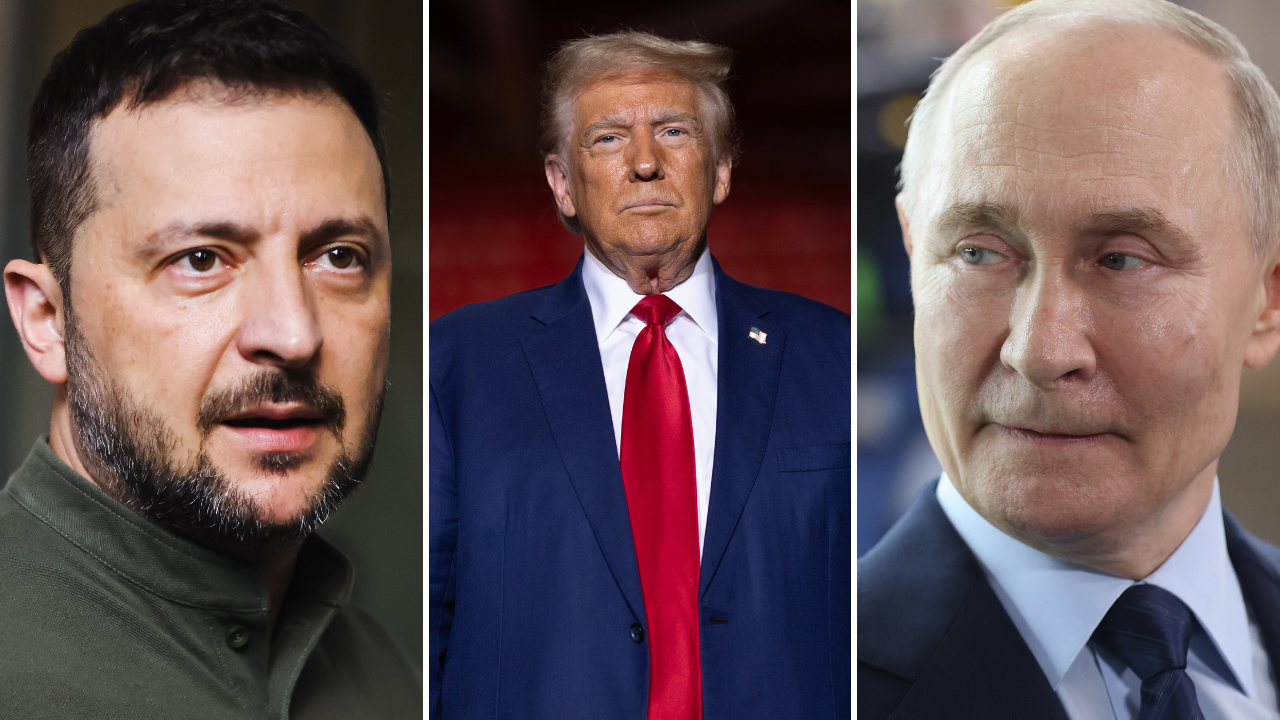New York
Once Rarely Seen, Gilgo Beach Suspect’s Family Now Barbecues on the Lawn

Until last month, the neighbors never saw much of the family living in the rundown house on First Avenue in Massapequa Park on Long Island.
But in the five weeks since the authorities charged the house’s owner, Rex Heuermann, in the Gilgo Beach serial killings, his wife and children have become unlikely fixtures in their neighborhood.
The family — Mr. Heuermann’s wife, Asa Ellerup, 59, and their children, Victoria, 26, and Christopher, 33 — slipped out of the house in July just before crowds of reporters and gawkers descended and investigators began to hunt for evidence in a search that lasted nearly two weeks.
But Ms. Ellerup and the children soon returned and quickly became a daily presence outside the house, sitting together on the front porch or working to put the place back together. She declined to speak to a reporter who recently stopped by.
Not so long ago, the family had a reputation as reclusive. Now, while they still have little contact with the neighbors, clouds of savory smoke regularly waft from their yard.
“They’re having barbecues on the front lawn — they never did anything like that before,” said Etienne de Villiers, 68, a retired New York City firefighter who lives next door. “Suddenly, they’re out there all the time.”
A lawyer representing the two children offered an explanation for the change in behavior: Investigators had left the house uninhabitable.
“It’s literally piled floor-to-ceiling with debris,” the lawyer, Vess Mitev, said. “It’s like someone broke in and tore the place apart.”
The unsolved Gilgo Beach case riveted the public for more than a decade, and Mr. Heuermann’s arrest on July 13 was a huge break in it. Now, a bizarre public battle is unfolding over the investigators’ search of his ramshackle home, with his family recently holding a news conference on the lawn.
The family always stood out as aloof in the otherwise tight-knit neighborhood, their dilapidated ranch house drawing sneers on a mostly fastidiously tidy block. Many neighbors presumed Ms. Ellerup and the children would never return to the home given its new notoriety.
“Who in their right mind would come back to a house equated with the most horrible thing to ever happen in this town?” one neighbor, Chris Duncan said.
Mr. Heuermann, who is being held without bail at a Suffolk County jail, is scheduled to appear in court next month on charges of murdering three of the 11 victims whose bodies were found more than a decade ago along Ocean Parkway, near Gilgo Beach. He has pleaded not guilty.
Prosecutors say he hired the women as escorts and then killed them, bound their bodies and wrapped them in burlap. He is the prime suspect in the death of a fourth woman. It is unclear whether he is linked to the other seven victims.
To many homeowners in this suburban village, Mr. Heuermann was a workaday, if antisocial, neighbor who commuted to and from his architectural consulting firm in Manhattan. Last year, though, after repeatedly running into dead ends, investigators used DNA analysis and cellphone records to close in on him.
The family’s lawyers are seeking to address the damage they say investigators did to the home in the search for evidence. The lawyers have associates helping Ms. Ellerup and the children around the house and recently set up a lectern on the front lawn to publicly air their complaints.
John Ray, a lawyer who represents the families of two women whose remains were found in the Gilgo Beach area but whom Mr. Heuermann has not been charged with killing, held his own news conference and called for Ms. Ellerup to be investigated.
Raymond Tierney, the Suffolk County district attorney, has said Mr. Heuermann, 59, committed the killings while his family was away on trips.
Mr. Ray said it was implausible that Ms. Ellerup was ignorant of her husband’s deeds and “should be considered a suspect and investigated accordingly.”
A lawyer for Ms. Ellerup, Robert A. Macedonio, dismissed Mr. Ray’s assertion.
“She knew nothing about any of this,” Mr. Macedonio said in a phone interview. “If it happened, he was leading a complete double life.”
Mr. Macedonio said that investigators had never interviewed Ms. Ellerup or the couple’s children and that there was no indication they would be charged.
“She hasn’t even begun to process what he’s being charged with,” Mr. Macedonio said. “She’s still putting her own life back together.”
Ms. Ellerup has not visited Mr. Heuermann in jail but did speak to him once by phone when he called, Mr. Macedonio said.
Upon returning to the family’s house, she greeted the media scrum outside with a lewd gesture and settled into bantering from afar with reporters and photographers, by turns cordial and dismissive.
“They’re sitting outside smiling,” Mr. Ray said. “She seems very out of sync with what is really happening.”
Ms. Ellerup has filed for divorce “to protect herself and her children” and is considering suing the authorities for what she says is the extensive damage investigators caused, Mr. Macedonio said.
The family stayed with relatives and friends and slept in their car while the search proceeded, Mr. Macedonio said.
In terms of the damage to the house, the family’s lawyers say, investigators ripped up floorboards and pulled belongings out of closets, leaving them piled in disarray. The bathtub was cut open and mattresses were seized as evidence. Even now, Mr. Macedonio said, the family was sleeping on mats on the floor while waiting for new mattresses.
With their bedrooms in shambles, the children had to sleep in the basement, Mr. Mitev said.
Neighbors have not flocked to support the family. Many are unsure whether Ms. Ellerup deserves sympathy or suspicion, and are skeptical that she could have been clueless about the crimes her husband is accused of.
“We’re getting a slew of emails from people wanting to help and a slew from other people saying, ‘I hope you burn in hell,’” Mr. Mitev said.
“Some are sympathetic and some say, ‘When can we get this thing out of here?’” he added, regarding the unsightly home. “But there’s no getting it out of here because they have nowhere to go.”
For now, Mr. Mitev added: “They are going to rebuild; they want to fix it up,” He said investigators had violated the family’s rights with what he called their reckless search.
Adding to the family’s woes, Mr. Macedonio said, Ms. Ellerup was being treated for breast and skin cancer and could not afford the premium payments for the health insurance she had through Mr. Heuermann’s business.
With the family facing financial hardship, damage to their home and shock from the criminal charges, things could change, he said.
“At this point,” he said, “there’s no plan.”
Some help has come from afar. More than $50,000 has been raised for the family through an online fund-raiser created by Melissa Moore, the daughter of the serial killer Keith Hunter Jesperson, known as the “Happy Face Killer.”
Mr. Heuermann grew up with his parents and four siblings in the house, which is on a tight grid of streets an hour from Midtown Manhattan. He bought it from his family in the 1990s but let it fall into disrepair as neighbors renovated theirs and watched the property values soar.
Many neighbors feared the house would become a notorious landmark. Village authorities have installed street signs forbidding parking or even stopping nearby. The return of the family has not helped in that regard, another neighbor, Warren Ferchaw, said.
“I really think the best thing for everyone is for them to move on and for the house to be torn down once and for all,” Mr. Ferchaw said while walking his dog near the house on a recent evening as the family barbecued on the front lawn.
This does not seem imminent. Nearby Massapequa is Ms. Ellerup’s hometown. She grew up there after immigrating to the United States from Iceland with her family as a child, and has lived in her current home for the 27-year duration of her marriage to Mr. Heuermann.
“This is all that they’ve known, so there’s no real options,” Mr. Mitev said.
Last week, the family seemed to be settling back in, moving items between the house and the garage. Ms. Ellerup bristled when a reporter approached.
“Shoo, shoo,” she said, extending her hands as if dismissing a dog. “We’ve got too much work to do.”

New York
N.Y.C.’s Mayoral Candidates Spent Millions on TV Ads. What Are They Saying?

Estimated spending on
broadcast ads that have aired
$1.1 million
$4.3 million
The Democrats running for mayor in New York City and a super PAC supporting Andrew M. Cuomo are spending millions to reach potential voters, with much of the spending going toward commercials on broadcast television. A New York Times analysis of the broadcast ads that have aired so far, using data from AdImpact, explored the major themes highlighted by the candidates: crime and safety, President Trump, affordable housing and corruption.
Among the ads aired,
seven mention crime and safety
3 ads
Mr. Cuomo, the former governor, has been framing himself as a law-and-order candidate who will crack down on crime and improve public safety. Ads run by Fix the City, the super PAC backing Mr. Cuomo, have depicted New York as a city in chaos. One of its ads opens with images of police sirens, caution tape and subway riders fleeing a smoke-filled train.
“Crime is rampant,” says a voiceover in another pro-Cuomo ad, also paid for by Fix the City. That ad also references Mr. Cuomo’s “five-borough crime and affordability plan,” which would add “5,000 more cops” to the streets.
Other candidates took a subtler approach. Scott Stringer, a former city comptroller, said in his only broadcast ad to air so far that he would “put a cop on every train” and “hire more mental health workers.” An ad for Brad Lander, the current city comptroller, tied the idea of safety to Mr. Lander’s plan to “end street homelessness for the mentally ill.” An ad for Zohran Mamdani, the state assemblyman, simply said he would make New York a “safer city.”
Among the ads aired,
five mention President Trump
2 ads
Taking jabs at Mr. Trump and his administration could almost be considered a requirement for candidates running in a Democratic primary in a city where former Vice President Kamala Harris won about 70 percent of votes in the 2024 presidential election. Still, some of the ads that mention the president are more direct than others.
An ad for Mr. Stringer was among the most explicit: “We deserve a mayor who can get our city back on track and keep this schmuck out of our business,” Mr. Stringer says over a clip of Mr. Trump dancing at a rally, adding that he will “tell Trump where to stick it.”
Mr. Lander drives a large forklift around a junkyard in his broadcast ad and places cars into a crushing machine. One of the cars has the words “Trump & Musk” in large black letters across the side.
Other candidates made only passing swipes at the president. Some of the ads supporting Mr. Cuomo mentioned that he took on Mr. Trump as governor and will again as mayor, and an ad for Mr. Mamdani said he would stand up to Mr. Trump. Mr. Myrie’s broadcast ad did not mention Mr. Trump.
All ads mention affordable housing
3 ads
Every broadcast ad reviewed in the analysis mentioned housing at least once. In one ad, Mr. Mamdani likened Mr. Cuomo to the current mayor, Eric Adams, whose housing policies have been similar to the former governor’s, and whose popularity declined after he was indicted on fraud and corruption charges in 2024. The Trump administration later dropped the charges.
“Cuomo is running for Adams’s second term,” Mr. Mamdani said in the ad, adding that he will “take on bad landlords and greedy corporations.”
Mr. Adams and Mr. Cuomo are both moderates who have many of the same donors, including powerful real estate leaders, and both have supported housing policies that are in stark contrast to Mr. Mamdani’s. The mayor and former governor both oppose freezing increases for rent-stabilized apartments, for example, while one of Mr. Mamdani’s ads is devoted solely to his plan to freeze rent prices.
In ads for other candidates, housing is mentioned only briefly. An ad by Fix the City for Mr. Cuomo said he will “cut red tape for affordable housing and build 500,000 new units.” In Mr. Stringer’s ad, he said he will “turn vacant lots into affordable apartments.” Mr. Myrie’s ad says he has “the boldest plan to build affordable housing.”
Among the ads aired,
three mention corruption
0 ads
Several of the candidates mentioned corruption in their ads. In Mr. Lander’s ad, a second car is brought out to be crushed, this one symbolizing “corruption,” specifically as it relates to Mr. Cuomo.
“Andrew Cuomo spent $60 million of your money to defend himself in court. That’s corrupt,” a voiceover says as the car is brought to the crushing machine. “But Brad Lander fights corruption.”
In the ad in which Mr. Mamdani compares Mr. Cuomo to Mr. Adams, the candidate paints the former governor and mayor as the corrupt establishment, responsible for making the city unaffordable.
“Working people are being pushed out of the city they built, and it’s because corrupt politicians like Eric Adams and Andrew Cuomo have sold us out to billionaires and corporations, rigging the economy against us,” Mr. Mamdani says over a series of images that combine Mr. Cuomo’s face and quotes about the former governor from news articles.
Mr. Stringer defines corruption less precisely, mentioning that he “fought corruption” as comptroller. The three pro-Cuomo broadcast ads by Fix the City did not mention corruption, nor did the ad for Mr. Myrie.
Total spending on advertising,
including future broadcast spots
| Total spent | Broadcast share | |
|---|---|---|
|
Fix the City (pro-Cuomo super PAC) |
$8.1 million | 91% |
 Mamdani |
$3.0 million | 41% |
 Lander |
$2.3 million | 72% |
 Stringer |
$1.9 million | 83% |
 Myrie |
$1.7 million | 27% |
Spending on ads that have already aired on broadcast television, which this analysis focused on, is one slice of candidates’ overall ad spending. They have also purchased broadcast spots to air more ads in the future, as well as ads on other platforms like streaming television, satellite and internet. Broadcast was, however, a major focus for the candidates.
Fix the City, the pro-Cuomo super PAC, has spent the most on advertising by far, with 91 percent of its spending devoted to commercials on broadcast networks. (Mr. Cuomo’s campaign has not yet aired any of its own ads on broadcast television, according to AdImpact.)
By contrast, the campaign for Mr. Mamdani, which has become known for its savvy approach to social media, has spent just 41 percent of its advertising budget on broadcast, according to the AdImpact data. (Mr. Mamdani’s campaign has, however, spent more on broadcast than any other individual platform.)
One of the leading Democrats in the mayor’s race, Adrienne Adams, the speaker of the New York City Council, has not yet aired an ad on broadcast television. The candidate struggled to raise funds early in her campaign, but recently got an infusion of $2 million from the city’s fund-matching program, which the campaign said it would use for an aggressive ad blitz in the coming weeks before the June 24 primary.
New York
Are You Smarter Than a Billionaire?

Over the course of one week, some of the richest people in the world descended on New York’s auction houses to purchase over $1 billion of art. It might have played out a little differently than you would have expected.
Can you guess which of these works sold for more?
Note: Listed sale prices include auction fees.
Image credits: “Untitled,” via Phillips; “Baby Boom,” via Christie’s Images LTD; “Hazy Sun,” With permission of the Renate, Hans & Maria Hofmann Trust/Artists Rights Society (ARS), New York; via Christie’s Images LTD; “Petit Matin,” via Christie’s Images LTD; “Concetto spaziale, La fine di Dio,” Artists Rights Society (ARS), New York/SIAE, Rome; via Sotheby’s; “Baroque Egg with Bow (Orange/Magenta),” via Sotheby’s; “The Last Supper,” The Andy Warhol Foundation for the Visual Arts, Inc./Licensed by Artists Rights Society (ARS), New York; via Christie’s Images LTD; “Campbell’s Soup I,” The Andy Warhol Foundation for the Visual Arts, Inc./Licensed by Artists Rights Society (ARS), New York; via Christie’s Images LTD; “Miss January,” via Christie’s Images LTD; “Fingermalerei – Akt,” via Sotheby’s; “Grande tête mince (Grande tête de Diego),” Succession Alberto Giacometti/Artists Rights Society (ARS), NY; via Sotheby’s; “Tête au long cou,” Succession Alberto Giacometti/ARS, NY/Photos: ADAGP Images/Paris 2025; via Christie’s Images LTD; “Revelacion,” Remedios Varo, Artists Rights Society (ARS), New York / VEGAP, Madrid; via Christie’s Images LTD; “Le jardin nocturne,” Foundation Paul Delvaux, Sint-Idesbald – ARS/SABAM Belgium; via Christie’s Images LTD.
Produced by Daniel Simmons-Ritchie.
New York
Video: How a Mexican Navy Ship Crashed Into the Brooklyn Bridge

On Saturday, a Mexican Navy ship on a good will tour left a New York City pier bound for Iceland. Four minutes later, it crashed into the Brooklyn Bridge. [Spanish] “It’s falling!” [English] “No way!” Here’s what happened. The Cuauhtémoc had been docked on the Lower East Side of Manhattan for four days, open to visitors looking for a cultural experience. As the ship prepared to leave on Saturday night, a tugboat arrived to escort it out of its pier at 8:20 p.m. The ship’s bow, the front of the vessel, faced Manhattan, meaning it would need to back out of its berth into the East River. As the Cuauhtémoc pulled away from shore, the tugboat appeared to push the side of the ship, helping to pivot the bow south toward its intended route. The river was flowing northeast toward the Brooklyn Bridge and the wind was blowing in roughly the same direction, potentially pushing the ship toward a collision. Photos and videos suggest the tugboat was not tied to the ship, limiting its ability to pull the ship away from the bridge. The Cuauhtémoc began to drift north, back first, up the river. Dr. Salvatore Mercogliano, who’s an adjunct professor at the U.S. Merchant Marine Academy, told The Times that the ship appeared to be giving off a wake. This suggests its propellers may have been running in reverse, pushing it faster toward the bridge. The tugboat sped alongside the ship as it headed north, possibly trying to get in front of it and help the ship maneuver the other way. But it was unable to cut the ship off or reverse its course. All three masts crashed into the underside of the Brooklyn Bridge at approximately 8:24 p.m., four minutes after the ship had left the pier, causing the top sails to collapse. Crew members standing on the masts during the collision were thrown off entirely. Others remained hanging from their harnesses. A New York City patrol boat arrived about eight minutes after the collision, followed quickly by a fire department boat. Additional law enforcement and emergency medical services removed the wounded for treatment. According to the Mexican Navy, two of the 227 people aboard the ship were killed and 22 others were injured.
-

 Business1 week ago
Business1 week agoPlastic Spoons, Umbrellas, Violins: A Guide to What Americans Buy From China
-

 Movie Reviews1 week ago
Movie Reviews1 week agoMOVIE REVIEW – Mission: Impossible 8 has Tom Cruise facing his final reckoning
-

 Movie Reviews1 week ago
Movie Reviews1 week ago‘Magellan’ Review: Gael Garcia Bernal Plays the Famous Explorer in Lav Diaz’s Exquisitely Shot Challenge of an Arthouse Epic
-

 Technology1 week ago
Technology1 week agoThe oldest Fire TV devices are losing Netflix support soon
-

 Maryland1 week ago
Maryland1 week agoMaryland, Cornell to face off in NCAA men’s lacrosse championship game
-

 Tennessee1 week ago
Tennessee1 week agoTennessee ace Karlyn Pickens breaks her own record for fastest softball pitch ever thrown
-

 World1 week ago
World1 week agoPower outage disrupts final day of Cannes Film Festival, police investigate possible arson
-

 Politics1 week ago
Politics1 week agoTrump talks with Putin, spars with South African leader, threatens EU tariff hike in 18th week in office














